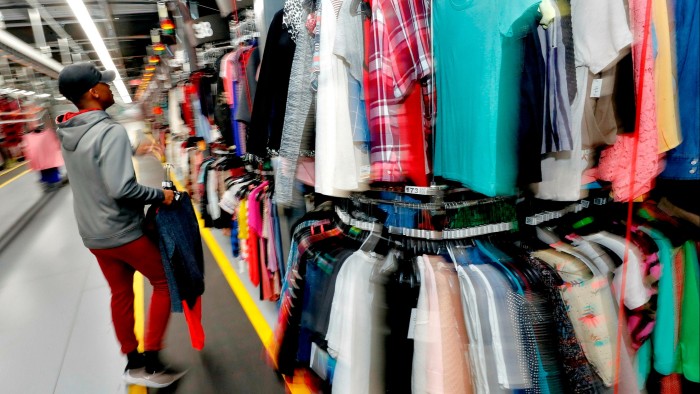Unlock the White House Watch newsletter for free
Your guide to what Trump’s second term means for Washington, business and the world
Like thrifters rifling for a discarded pair of Louboutins, investors in the market for second-hand items need a keen and discerning eye. Yet among the scuffed lookalikes, there are some shiny patent treasures to be found.
Companies which facilitate the buying and selling of used goods have two reasons to be optimistic. The appetite for preloved threads is growing. Reseller ThredUp — which admittedly has cloth in the game — reckons the market in the US could hit $44bn by 2029, compared with $25bn in 2024, because consumers increasingly think “second-hand first”. Fewer purchases of new stuff mean, over time, less second-hand inventory for shoppers to pick over. But there’s a lot of stock in people’s closets that can be offloaded before that happens.
Furthermore, this may be one of the few corners of the consumer world to get a Trump bump. The US’s import duties — assuming they stay in place — will result in Americans paying more for almost everything. But the costs for clothing and footwear could see particularly sharp increases given that most come from overseas. All of this would drive more and more shoppers towards the second-hand rack.
That helps explain why the share prices of big resellers have held up. Ebay, the original go-to for everything from clothes and rare books to cars, is up 12 per cent this year, compared with the S&P 500’s 4 per cent decline. Korea’s Naver, owner of US fashion resale site Poshmark, is up 2 per cent. Yet while the behemoths are set to profit from the shift to thrift, not all resellers are cut from the same cloth.
Think, for instance, of ThredUp and RealReal, which both rely heavily on consignments for their businesses. Sorting, verifying, deciding what to accept, photographing, listing and shipping all these items mean high operating expenses. Indeed, both businesses remain lossmaking — although they expect this to improve as they gain scale. RealReal has shed more than a third of its market value this year. And while ThredUp has shot up, that looks to be the result of ongoing restructuring efforts. Its stock is still trading at less than a fifth of its 2021 peak.
Businesses with flimsier finances are also more vulnerable to competition from Meta Platforms. Its Facebook Marketplace may be time-consuming and frustrating to use due to no shows and scams. But it is free, and has a gigantic reach: some 3.4bn people use Meta’s products every day. It is not hard to see it expanding its market share at the expense of pricier options.
That is perhaps the biggest threat to what otherwise looks like a consumer sector rags-to-riches story.
